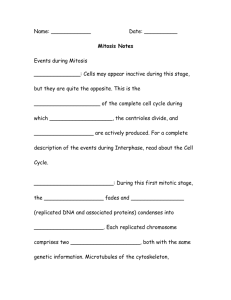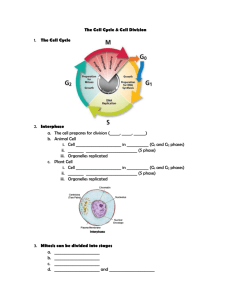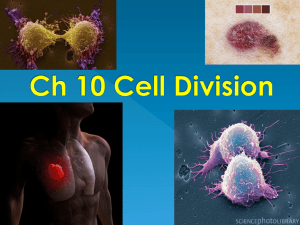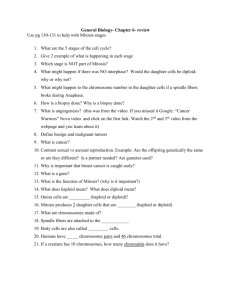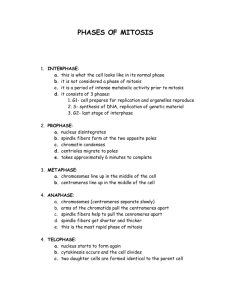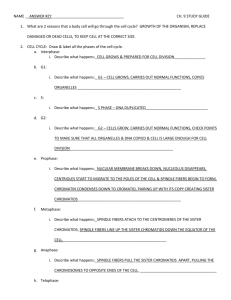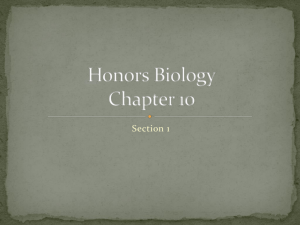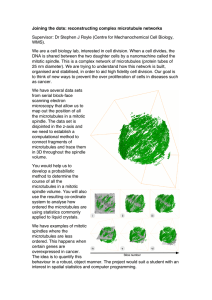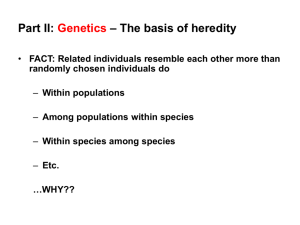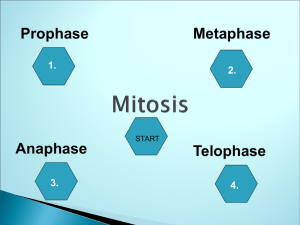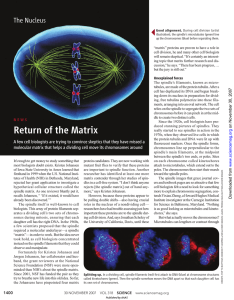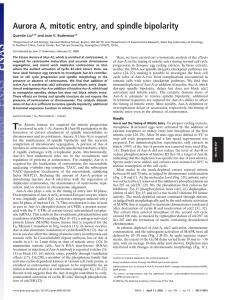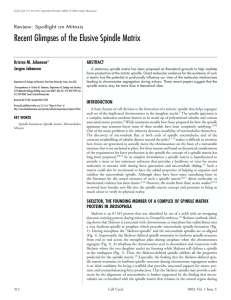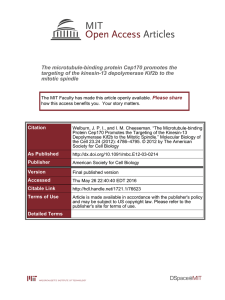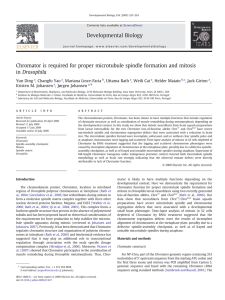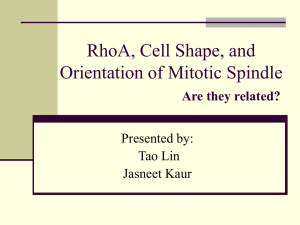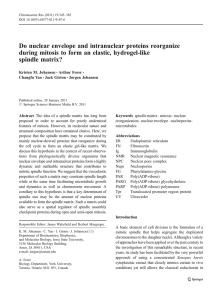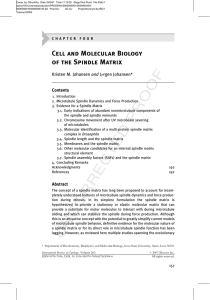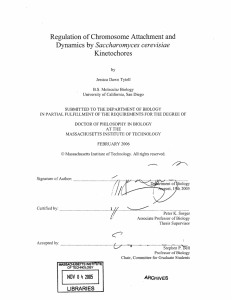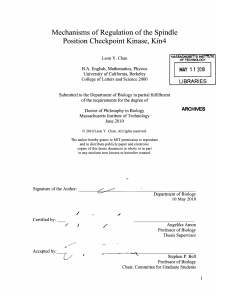File
advertisement
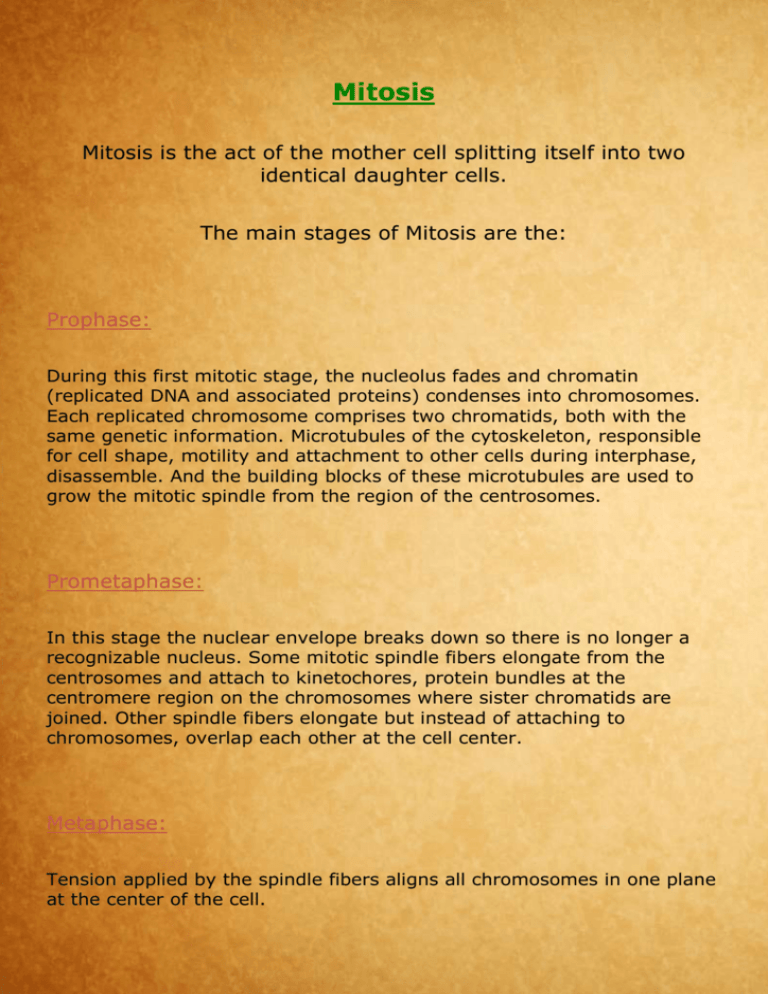
Mitosis Mitosis is the act of the mother cell splitting itself into two identical daughter cells. The main stages of Mitosis are the: Prophase: During this first mitotic stage, the nucleolus fades and chromatin (replicated DNA and associated proteins) condenses into chromosomes. Each replicated chromosome comprises two chromatids, both with the same genetic information. Microtubules of the cytoskeleton, responsible for cell shape, motility and attachment to other cells during interphase, disassemble. And the building blocks of these microtubules are used to grow the mitotic spindle from the region of the centrosomes. Prometaphase: In this stage the nuclear envelope breaks down so there is no longer a recognizable nucleus. Some mitotic spindle fibers elongate from the centrosomes and attach to kinetochores, protein bundles at the centromere region on the chromosomes where sister chromatids are joined. Other spindle fibers elongate but instead of attaching to chromosomes, overlap each other at the cell center. Metaphase: Tension applied by the spindle fibers aligns all chromosomes in one plane at the center of the cell. Anaphase: Spindle fibers shorten, the kinetochores separate, and the chromatids (daughter chromosomes) are pulled apart and begin moving to the cell poles. Telophase: The daughter chromosomes arrive at the poles and the spindle fibers that have pulled them apart disappear. Cytokinesis: The spindle fibers not attached to chromosomes begin breaking down until only that portion of overlap is left. It is in this region that a contractile ring cleaves the cell into two daughter cells. Microtubules then reorganize into a new cytoskeleton for the return to interphase.
